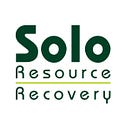Innovative Methods for Sludge Removal and Treatment Used by Waste Management Companies
Sludge is produced in drains and septic tanks through the process of chemical precipitation, sedimentation, and other primary processes. It typically floats on top of the effluent in the drains. Secondary sludge is activated biomass produced by biological processes. Sludge cannot be avoided because it is formed as a result of domestic use of kitchens and restrooms, as well as commercial and industrial activities linked to manufacturing, food production, and so on. Sludge disposal in landfills is not considered a viable solution due to concerns about leachate and harmful gas emissions. With traditional sludge treatment methods under review, waste management organisations must focus on alternative and sustainable sludge treatment technologies.
Contrary to popular belief, sludge is not an entirely wasted product. It includes toxins like heavy metals, organic pollutants, and pathogens as well as nutrients crucial for agriculture like nitrogen, phosphorus, and potassium. In order to reduce the sludge’s propensity for fermentation, water content, and pathogen presence, Solo Resource Recovery uses cutting-edge sludge treatment techniques. The total amount of sludge is reduced to less than its initial volume using a gravity thickener. Using air bubbles, the dissolved air floatation method thickens sludge.
Careful monitoring of the anaerobic digestion process
In the next step of sludge treatment, Solo waste management company will decompose organic materials into stable chemicals throughout the biological process. The method kills germs and facilitates dewatering. The two-stage process of sludge treatment is accompanied by the help of anaerobic metabolisation by acid-forming bacteria which hydrolyse large molecules and ferment them into smaller fatty acid molecules. Anaerobic metabolism is performed in the absence of oxygen. The dissolved materials in the sludge are turned into biogas in a second tank. As anaerobic digestion is extremely sensitive to temperature and acidity, the process is carefully monitored.
Aerobic sludge treatment method
Thermal hydrolysis, the second stage of sludge treatment, entails mixing sludge and steam in a pulper. This homogenised, heated mixture is placed into a reactor under pressure. Treatment of sludge can also be carried out aerobically when oxygen is present. Sludge is aerated in an open tank for three weeks without the production of methane gas. During this sludge treatment procedure, over half of the organic sludge particles are transformed into liquids and gases.
Promoting the recovery of useful materials
The digested sludge slurry is put on a bed of sand during the subsequent dewatering stage, which makes use of sludge-drying beds. A plumbing system installed beneath the sand collects water, which is then pumped to the facility. In addition to taking up less area and allowing for more operational control, a rotary drum filter can also be utilised in place of sand beds. The recovery of useful materials from sludge, such as fertilisers and biopolymers, is supported by Solo’s sludge treatment methods. By using biogas in this manner, Solo Waste Management Company strives to offer an energy source that is both economically and environmentally advantageous. Stabilized sludge can be handled without posing any health risks, and it lacks a strong smell.
Composted soil to improve the quality of topsoil
The sludge is not spread on areas where crops are cultivated because it can contain dangerous chemicals. Due to the addition of vegetable co-products that boost soil nutrients for plant growth, composted sludge has a higher stable organic content. Soil erosion is decreased when sewage sludge is used in land restoration and revegetation. Additionally, topsoil can benefit from the usage of composted soil to enhance its quality, particularly in industrial environments where it may be impacted by storage, high toxicity, and a detrimental pH level.
Integrated fixed-film activated sludge (IFAS)
Improved sludge removal and treatment techniques are used by Solo Resource Recovery, a waste management company, to increase efficiency without requiring more land. Common methods include the ballasted flow reactor method to coagulate suspended solids using sand and polymer to speed up the pace at which they set. Two additional cutting-edge sludge treatment techniques are integrated fixed-film activated sludge (IFAS) and biological aerated filters.
Solo Resource Recovery provides services for industrial bins, liquid waste services, construction waste services, wheelie bin services, medical waste services, and more. Industrial services provided by the company include vacuum excavation, drain and pipe cleaning, subsurface engineering and maintenance, Geotech & pavement investigation, street sweeping, emergency response and spills, and more. Solo’s waste management services for households, councils, industries, and businesses are available across Adelaide, Chinderah, Kingscliff, Mornington, Northern Rivers, Potsville, Perth, and other cities throughout Australia.
